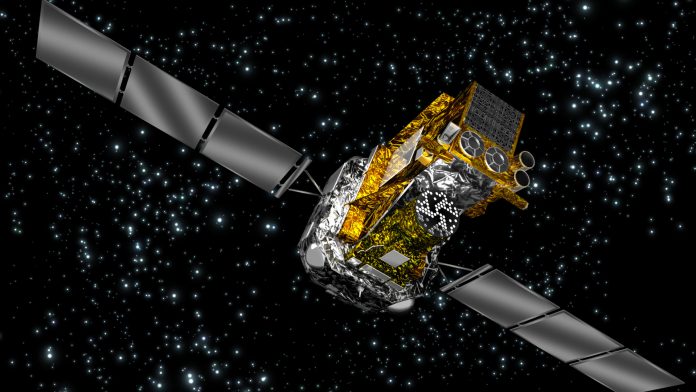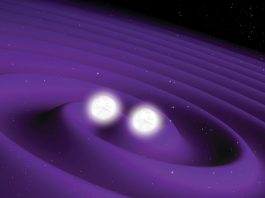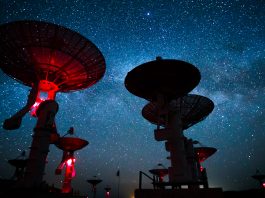Dr Erik Kuulkers discusses some of the current and future INTEGRAL mission’s activities, including studying flashes of powerful radiation that suddenly appear in the gamma-ray sky
Designed to detect some of the most energetic radiation that comes from space, ESA’s INTErnational Gamma-Ray Astrophysics Laboratory (INTEGRAL) is the most sensitive gamma-ray observatory ever launched. The mission is helping to solve some of the biggest mysteries in astronomy, from exploring the physical properties of black holes and neutron stars, to studying the flashes of extremely powerful radiation that suddenly appear somewhere in the gamma-ray sky and disappear again after a short time – which have been confirmed as the biggest observed explosions in the Universe through observations at different wavelengths.
As the mission celebrates its 18th birthday after launch on the 17 of October 2002, Innovation News Network’s International Editor, Clifford Holt, spoke with the European Space Agency’s Project Scientist for INTEGRAL, Dr Erik Kuulkers, about some of the mission’s recent and possible future activities, and the potential to continue operations to 2025 and beyond.
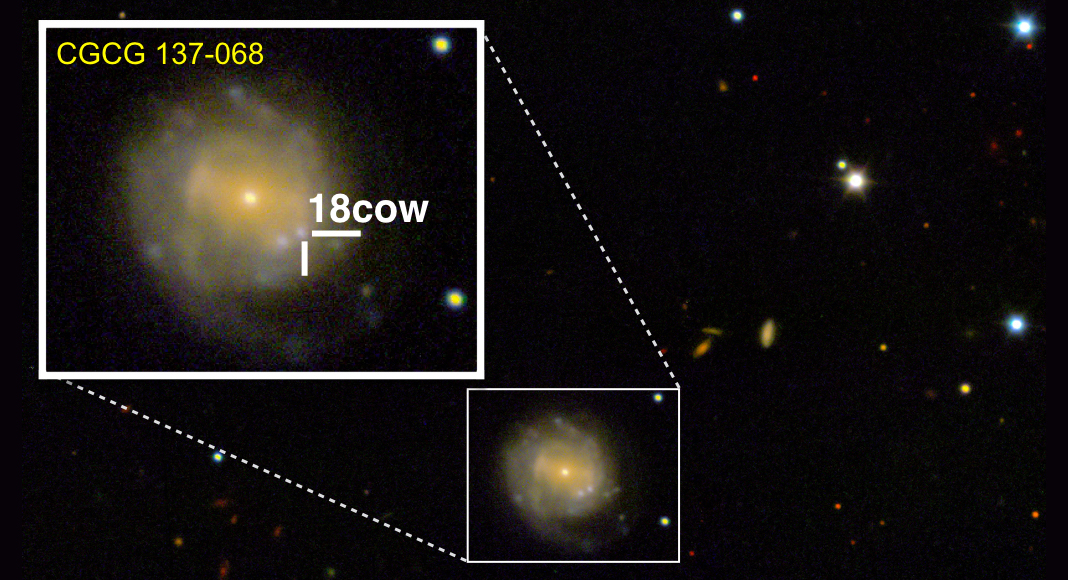
© Margutti/W. M. Keck Observatory
Last year, INTEGRAL helped to find a source of powerful X-rays at the centre of an unprecedentedly bright and rapidly evolving stellar explosion, AT2018cow. What was INTEGRAL’s role here? What did it observe and how was the data helping in gaining a better understanding of the object?
The source AT2018cow (also known as the ‘Cow source’) was first spotted by the ATLAS telescope in Hawaii. Located in a galaxy some 200 million light years away, astronomers watched as in only two days the object exceeded the brightness of any previously observed supernova.
I had noticed from the Astronomer’s Telegrams that this new, bright optical transient had already received a lot of attention by various observatories at various wavelengths. For instance, NASA’s X-ray satellites NuSTAR and Neil Gehrels Swift Observatory (or simply ‘Swift’), had observed its X-ray emission. By extrapolating these results into the wavelength region that INTEGRAL is sensitive to, I suggested it could also be detected by our satellite. I checked this with the INTEGRAL Users Group, and they agreed. We thus started observing the ‘Cow source’ some five days after its discovery.
While having a certain overlap with NuSTAR in the high-energy X-ray part of the spectrum, INTEGRAL observes in a wavelength range that is not covered by any other observatory, and so it was able to see the emission spectrum of the source entirely, up to soft gamma-ray energies. These observations revealed a high-energy radiation which was thought to have been emitted by an area of very hot and dense plasma surrounding the source.
INTEGRAL is now 18 years old, which makes it much easier to do such observations as there is currently more interest from the community to study the variable sky, i.e., transient sources observed as target of opportunities. It was, therefore, able to observe the Cow source almost continuously for a couple of weeks – much longer than any of the other observatories. This enabled us to get a complete picture of what was happening, which included gathering data which showed that the high-energy X-ray signal was gradually fading. This so-called ‘reprocessed radiation’ was subsequently found to show signal patterns typical of an object that draws in matter from its surroundings – either a black hole or a neutron star.
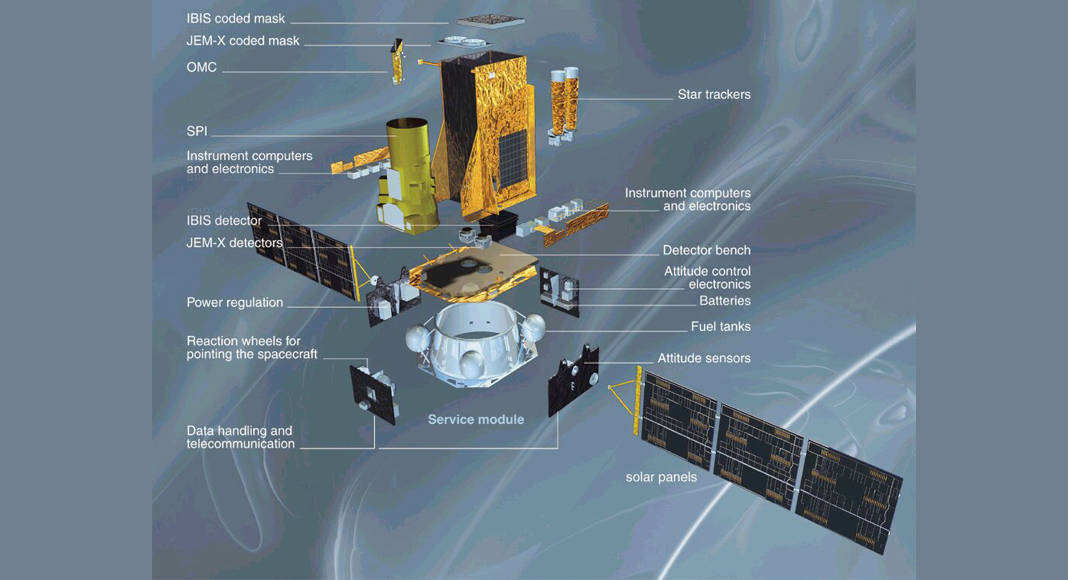
How will INTEGRAL complement both current and future missions designed to explore multimessenger astronomy?
As already mentioned, INTEGRAL covers a wavelength range that no other observatory is sensitive to. That means that we are able to bridge the gap between many existing and future missions.
Of course, there is some overlap with other observatories at certain wavelengths, too. This means that we are able to complement each other and also confirm signals when one is detected. This latter point is important. For example, in 2015 NASA’s Fermi satellite detected a weak signal related to a gravitational wave event named GW150914. INTEGRAL didn’t detect anything, and so Fermi’s detection went unconfirmed. However, in 2017, both satellites saw a signal from a gravitational wave event at the same time, and because two experiments detected it independently, one was able to confirm the signal.
I am also involved in an effort to develop a common framework for announcing observations. This will be important moving forward as, currently, different observatories have their own formats for displaying their observing plans. This means that collecting and collating all the information can be both difficult and time consuming. As such, some years ago we began to develop a common framework for announcing and sharing observing schedules. It has involved a lot of time and energy, but our protocols have recently been endorsed and we are now starting to incorporate various space- and ground-based observatories, such as ESA’s XMM-Newton observatory, NASA’s X-ray facilities NuSTAR and Chandra, as well as optical observatories.
The new way of announcing information can be obtained automatically, and one team will be able to see what region of the sky another team is observing and potentially put their capabilities together. In the future, we hope to be able to incorporate many more observatories across the electro-magnetic spectrum.
How important was high-energy X- and gamma-ray data from INTEGRAL in understanding more about how the accretion disc around the black hole in the binary system known as V404 Cygni was causing the jet to rotate?
The observations by INTEGRAL were triggered by an astronomer from the community who wanted to follow the source’s evolution. We have a couple of proposals in our database to observe black-hole binary systems when they become active. These systems go through various stages (called ‘states’) during their active phase. In recent years, astronomers have increasingly come to focus on when a binary is changing from one state to another. Because it is likely that the changes in state happen in the accretion disk near the black hole, which means that you want to observe at X-ray and gamma-ray wavelengths, they trigger INTEGRAL. In addition to the wavelength sensitivity, as previously mentioned, INTEGRAL can conduct continuous observations for up to a few days and not be interrupted by sources being blocked by the Earth, etc., because of its wide and long (2.7 days) orbit and so it can, therefore, better cover these state changes. Most of the other observatories, such as NuSTAR and Swift, are in a low Earth orbit (LEO), which means that they can only observe continuously for around an hour.
The state changes reveal a lot about the system, and continuous observations provide the means to determine time scales for the changes as they happen – if the changes happen very quickly, it is likely that they take place in the vicinity of the black hole.
Of the many scientific papers that have since been written about this system, INTEGRAL’s data is frequently used to provide benchmark information against the contemporaneous observations at other wavelengths, including optical and radio, of this system.
INTEGRAL will celebrate 18 years of operations in October, and it is hoped that operations will continue for the coming years. What are your own hopes for the future of the mission?
Every two to three years, we have to show that the satellite is healthy and that we are still able to do interesting science; we essentially have to demonstrate that the mission is still worth the money. ESA’s resources are limited and in addition to satellites in operation, there are always new missions under consideration that promise new science. Nevertheless, INTEGRAL has been successful in getting further extensions; there is certainly more science to do with the mission and the interest from the scientific community remains high.
The last couple of years has seen the scientific community come to focus more on transient phenomena like gravitational wave events, fast radio bursts, ultra-high energy events, and transient activity in other sources. When it comes to supernovae, for example, INTEGRAL is able to see in a wavelength region that no other mission is sensitive in. Moreover, there are still a couple of phenomena which scientists wish to see before the end of the mission, including nova outbursts. A nova is a binary system in which a white dwarf (a compact object, but not as compact as a neutron star or black hole) accretes material from a donor star. When these systems become active (i.e., in outbursts), theory says there should be radiation at certain wavelengths; that happens to be the same wavelength region that INTEGRAL is uniquely sensitive in.
Of course, as INTEGRAL ages we will continue to experience additional challenges – fuel is now running low, and the batteries and instruments will begin to degrade. Nevertheless, there is enough power, capabilities, and redundancy to potentially continue operations until 2025 and beyond, as long as the mission continues to be approved. Only one event will stop INTEGRAL operations for sure: the planned re-entry into the Earth atmosphere in early 2029. Even then, the post-operational and legacy phase will allow us to consolidate the scientific results and ESA will continue to provide scientists with access to INTEGRAL data still to be exploited.
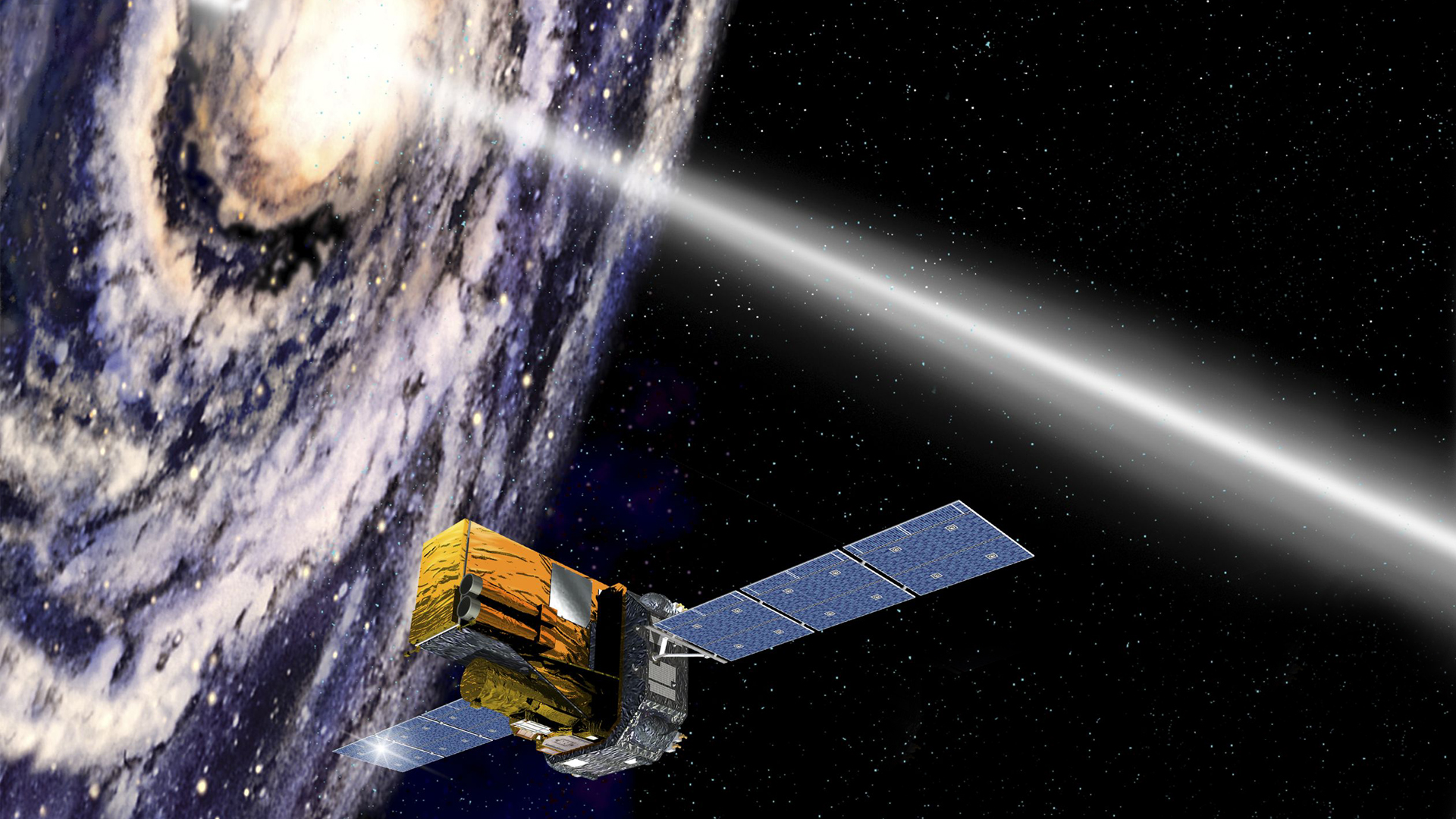
© ESA. Illustration by D. Ducros
The INTEGRAL anomaly and the recovery of science
When an anomaly occurs, a satellite is put into a configuration (orientation-wise as well as instrument-wise) such that it can stay there safely for several days in a row. During that time, the teams can find out what is going wrong without needing to move the satellite. This is known as an ‘Emergency Safe Attitude Mode’ (EASM), and on 16 May 2020 the eighth such EASM was triggered during thruster firing for a standard Reaction Wheel momentum dump (RWB). While in the stable Sun pointing safe mode under redundant thruster attitude control, a significant de-pointing of the spacecraft took place, which was automatically recovered within minutes.
Since then, the Reaction Control System (RCS) anomaly persists, with significantly reduced and uneven thruster performance. After every thruster firing, a drop in internal RCS pressure is noted with a slow recovery over the next few days.
On 17 July during another RWB – which was necessary to keep wheel speeds within pre-defined limits – a massive drop in the pressure of the reaction control fuel system (to a level at which the subsystem is effectively unusable) was observed. In response, a scheduling strategy that minimises the accumulation of angular momentum with the goal of making operations entirely free from the need for RWBs has been implemented.
This new strategy, also known as ‘Z-flip’, ensures that, over a planning period of several days, the influence of the solar radiation pressure is neutralised by selecting a series of observing attitudes and times, such that the effect is equivalent to periodically rotating by 360 degrees around the Sun line.
The strategy is enhanced during the time that the spacecraft is within the Earth’s radiation belts by selecting a perigee passage attitude, which makes use of the gravity gradient torque close to Earth.
Apart from the RCS anomaly, full redundancy of the spacecraft and all subsystems is maintained.
INTEGRAL has been able to resume science operations after the anomaly, and the science proposed via the Guest Observer programme by the worldwide user community, including unforeseen targets of opportunities, continuous to be delivered once more.
Matthias Ehle
INTEGRAL Mission Manager
Matthias.Ehle@esa.int
Richard Southworth
INTEGRAL Spacecraft Operations Manager
Richard.Southworth@esa.int
Dr Erik Kuulkers
INTEGRAL Project Scientist
Erik.Kuulkers@esa.int
Tweet @ekuulkers
Tweet @ESA_Integral
https://sci.esa.int/web/integral
Please note, this article will also appear in the fourth edition of our new quarterly publication.

